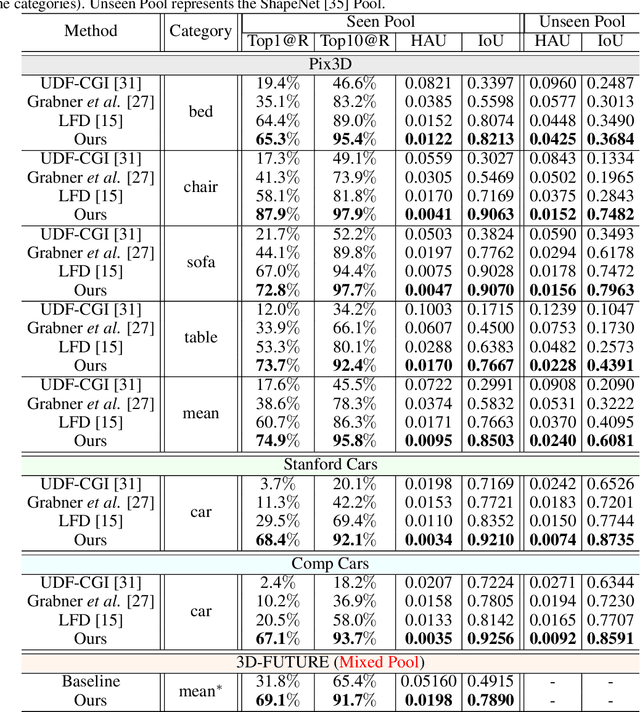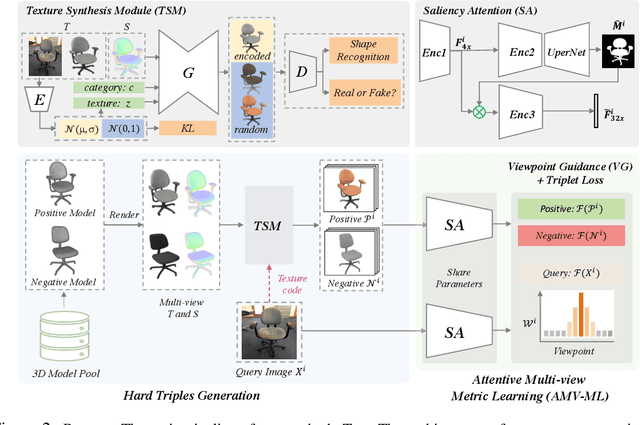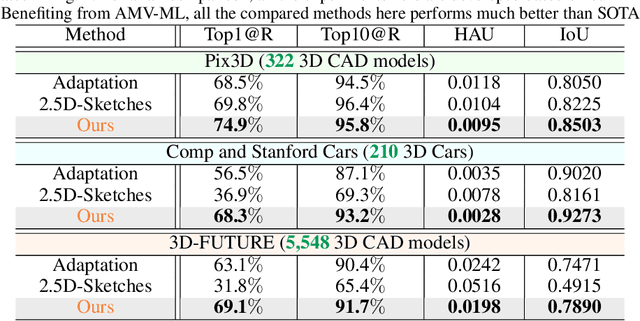Shunming Li
Hard Example Generation by Texture Synthesis for Cross-domain Shape Similarity Learning
Oct 27, 2020



Abstract:Image-based 3D shape retrieval (IBSR) aims to find the corresponding 3D shape of a given 2D image from a large 3D shape database. The common routine is to map 2D images and 3D shapes into an embedding space and define (or learn) a shape similarity measure. While metric learning with some adaptation techniques seems to be a natural solution to shape similarity learning, the performance is often unsatisfactory for fine-grained shape retrieval. In the paper, we identify the source of the poor performance and propose a practical solution to this problem. We find that the shape difference between a negative pair is entangled with the texture gap, making metric learning ineffective in pushing away negative pairs. To tackle this issue, we develop a geometry-focused multi-view metric learning framework empowered by texture synthesis. The synthesis of textures for 3D shape models creates hard triplets, which suppress the adverse effects of rich texture in 2D images, thereby push the network to focus more on discovering geometric characteristics. Our approach shows state-of-the-art performance on a recently released large-scale 3D-FUTURE[1] repository, as well as three widely studied benchmarks, including Pix3D[2], Stanford Cars[3], and Comp Cars[4]. Codes will be made publicly available at: https://github.com/3D-FRONT-FUTURE/IBSR-texture
 Add to Chrome
Add to Chrome Add to Firefox
Add to Firefox Add to Edge
Add to Edge